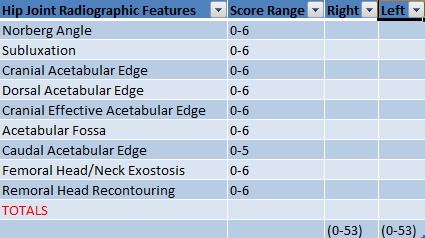What is Hip Dysplasia
Hip Dysplasia is a complex inherited condition where the hip joint does not develop correctly. Abnormalities include structural changes to the shape of the hip, ball and socket
As an affected dog gets older, the joint undergoes degenerative changes, leading to a loss of function. Development of osteoarthritis is likely. This is a painful condition
Is the Vizsla prone to Hip Dysplasia
Yes. The Hungarian Vizsla is one of 10 breeds identified by the BVA as “at risk” of developing Hip Dysplasia
Signs of Hip Dysplasia
These vary between individuals and may include:
- Lameness (being unable to walk correctly)
- Stiffness after rest
- A reluctance to exercise
- Groaning while resting or getting up
- Difficulty in using the stairs
A vet’s physical examination will provide a more reliable assessment of whether hip dysplasia is present and an X-ray is the only definitive way of diagnosing hip dysplasia.
How Can Hip Dysplasia be avoided
The best way to avoid Hip Dysplasia is to use the Kennel Club Health Checker to see whether your puppy comes from pedigree lines where both parents and as many relatives as possible have been hip screened – and have low scores. There is also a useful tool called “Estimated Breeding Values” (EBV) which is a calculation (based on known data) of the genetic “risk” of a particular individual’s (or a mating’s progeny) being affected by HD
Screening for Hip Dysplasia
The BVA/KC Hip Dysplasia Scheme
The British Veterinary Association (BVA) and the Kennel Club (KC) Hip Dysplasia Scheme assesses dogs’ x-rays to look for abnormalities in hip joints. A panel of experts provide a graded score for each x-ray. Your vet can organise this for you

